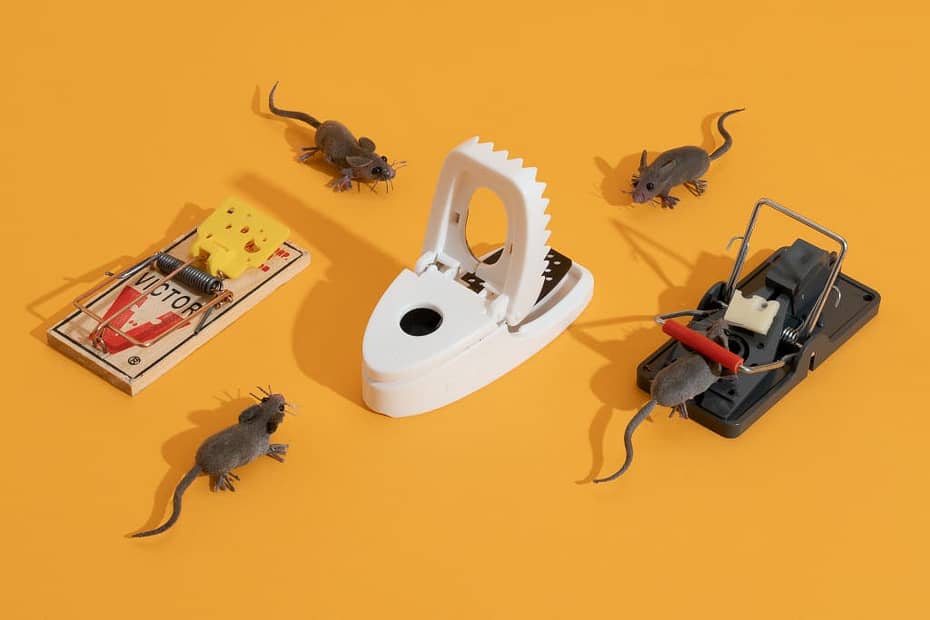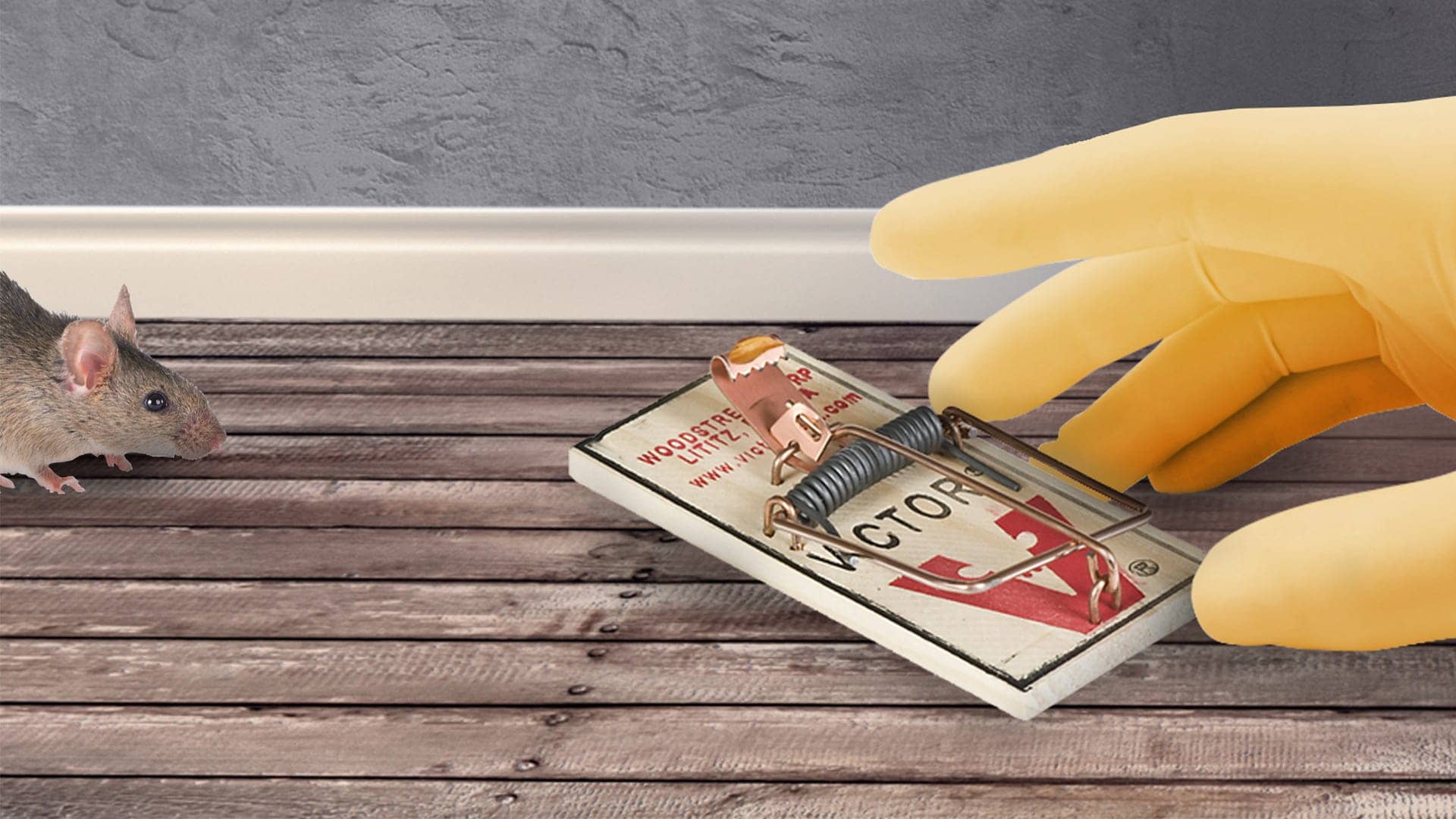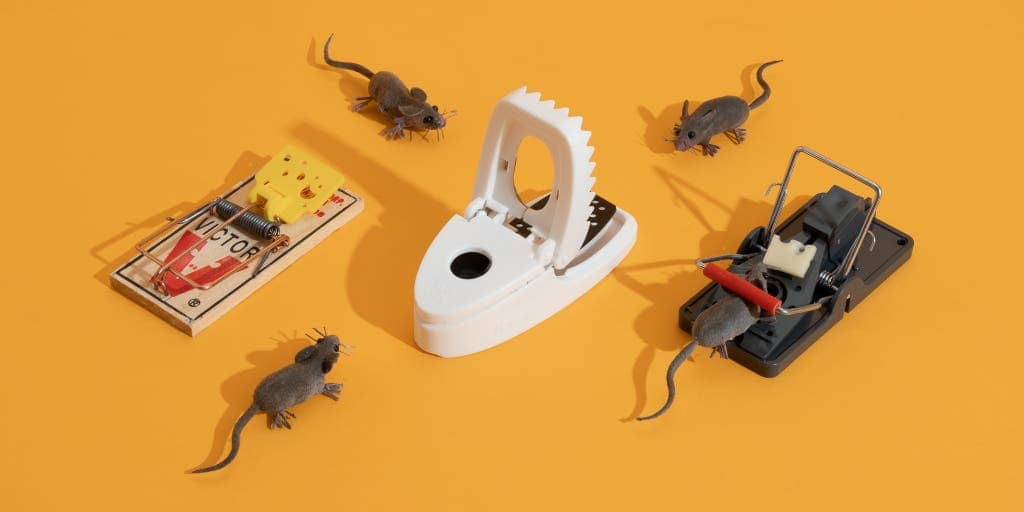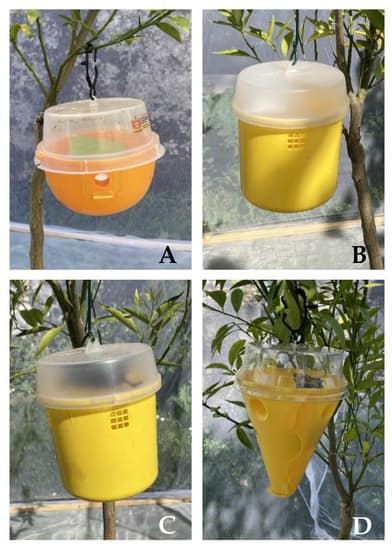Monitoring and maintaining mouse traps for efficiency involves regular inspection and proper cleaning to ensure effective capture and prevention of rodent infestation. By regularly checking traps for signs of activity, such as bait depletion or captured mice, and promptly removing any caught rodents, you can maintain the traps’ efficiency.
Additionally, it is crucial to clean the traps thoroughly after each use to remove any lingering scent that may deter mice from approaching. This will increase the chances of successful trapping and prevent the build-up of dirt or debris that could compromise the trap’s functionality.
Following these steps will help ensure the optimal performance of mouse traps in controlling rodent populations.
Understanding The Importance Of Mouse Trap Efficiency
Understanding the significance of mouse trap efficiency is crucial in the proper monitoring and maintenance of these devices. By ensuring their effectiveness, you can successfully control and eradicate mouse infestations in an efficient and sustainable way, protecting your home or business from the potential damage and health risks they pose.
When it comes to pest control, monitoring and maintaining mouse traps play a crucial role in ensuring effective results. Efficient mouse traps not only help in eliminating mice but also save time and money in the long run. Let’s dive into the reasons why monitoring mouse traps is crucial for effective pest control and how their efficiency can make a significant difference:
Why Monitoring Mouse Traps Is Crucial For Effective Pest Control:
- Timely detection: Regularly monitoring mouse traps allows for timely detection of mice. By keeping an eye on the traps, you can identify any signs of activity and take immediate action.
- Preventing infestation: Efficient mouse traps help in stopping the infestation before it becomes a severe issue. Monitoring provides an opportunity to catch mice early on, preventing them from multiplying and causing significant damage.
- Proper trap placement: By monitoring the traps, you can ensure that they are placed in the most strategic locations. This maximizes the chances of capturing mice and reduces the risk of mice going unnoticed.
- Identifying ineffective traps: Monitoring also helps in identifying traps that are not effective. This allows for necessary adjustments or replacements to maintain optimal trapping efficiency.
- Gauging the severity: By monitoring the number of mice caught, you can gauge the severity of the infestation. This information helps in deciding the most appropriate course of action for effective pest control.
How Efficient Mouse Traps Can Save Time And Money In The Long Run:
- Quick and effective results: Efficient mouse traps are designed to capture mice swiftly and effectively. This ensures that you spend less time and effort dealing with the pest problem, saving valuable resources.
- Minimized damage: By efficiently eliminating mice, traps help in minimizing damage to your property. Avoiding extensive damage saves you from costly repairs in the long run.
- Reduced reliance on pest control services: With efficient mouse traps, you can rely less on external pest control services. This reduces the recurring expenses associated with professional intervention and gives you greater control over the situation.
- Long-lasting solution: Using efficient traps provides a long-lasting solution to your mouse problem. By keeping the infestation under control, you avoid recurrent pest issues, saving both time and money.
- Prevention of health hazards: Mice carry various diseases and can contaminate food and surfaces. Efficient traps help in preventing the spread of diseases, safeguarding the health of your family and pets.
Maintaining the efficiency of mouse traps is an essential aspect of effective pest control. By monitoring them regularly, you can promptly address any issues and ensure optimal trapping results. With efficient traps, you not only save time and money but also maintain a hygienic and pest-free environment.
So, be proactive in monitoring your traps and take advantage of their effectiveness for a hassle-free pest control experience.

Credit: www.amazon.com
Signs Of Malfunctioning Mouse Traps
Signs of malfunctioning mouse traps can be spotted by monitoring and maintaining them regularly. This ensures their efficiency and effectiveness in catching rodents, aiding in pest control efforts.
Identifying Common Indicators Of Traps That Are No Longer Effective
When it comes to monitoring and maintaining mouse traps for efficiency, it is important to be able to identify signs of malfunctioning traps. By recognizing these indicators, you can take immediate action to maintain the effectiveness of your mouse traps.
Here are some common signs to look out for when inspecting mouse traps for efficiency issues:
- Bait disappearance without trap activation: If you notice that the bait from your mouse trap goes missing without the trap being triggered, it could be an indication that the trap is not functioning properly. The trap may need adjustments or replacement.
- Visible damage to the trap: Physical damage to mouse traps can render them ineffective. Look out for any cracks, broken parts, or signs of wear and tear. It is crucial to replace damaged traps promptly to ensure their efficiency.
- Traps not triggering: If you find that the traps are not capturing any mice despite there being activity in the area, it could mean that the trap mechanism is faulty or too sensitive. This can happen over time due to trap wear or improper installation. Adjustments or replacement may be necessary.
- Continued mouse sightings: If you consistently spot mice around the area where your traps are set, it could indicate that the traps are not effectively deterring or capturing the rodents. It is important to address this issue promptly to prevent a full-blown infestation.
- Lack of mouse activity in the traps: On the flip side, if you notice that the traps remain untouched for a long period, it might mean that the traps are not positioned correctly or the bait is not attractive enough to the mice. Consider repositioning the traps or using different types of bait to increase their effectiveness.
Inspecting mouse traps for efficiency issues is crucial in maintaining a mouse-free environment. By being vigilant and identifying these common indicators of malfunctioning traps, you can ensure that your traps are in optimal working condition to catch and control mice effectively.
Remember to address any issues promptly by making the necessary adjustments or replacing the traps as needed.
Regular Maintenance For Optimal Performance
Regular maintenance is essential for keeping mouse traps effective and efficient. By monitoring and maintaining the traps, you ensure optimal performance and a pest-free environment.
The Importance Of Routine Cleaning And Upkeep Of Mouse Traps
Maintaining mouse traps regularly is crucial not only for the trap’s longevity but also for its overall efficiency. Dirty traps filled with debris or residue can deter mice from approaching, rendering the trap useless. To ensure optimal performance, here are some key considerations for routine cleaning and upkeep:
- Inspect the Trap: Regularly examine the condition of your mouse traps to identify any damage, rust, or wear and tear. Replace or repair traps as needed to maintain their effectiveness.
- Remove Debris: Clean out any debris, such as crumbs or leftover bait, from the traps after each use. This prevents the accumulation of dirt, ensuring the trap remains enticing to mice.
- Sanitize Traps: Proper sanitation helps eliminate potential health risks and unpleasant odors. Wash the traps with warm, soapy water and rinse them thoroughly. This ensures that they are clean and ready for the next use.
- Bait Refresh: After cleaning, make sure to replenish the bait in the traps. Fresh bait will attract mice more effectively, increasing the chances of successful catches.
- Reposition Traps: Mice can become cautious if they witness multiple captures of their peers in the same location. To counter this, regularly move and reposition traps to different areas where activity is detected.
Proper Handling And Disposal Of Trapped Mice
While the primary focus is on monitoring and maintaining mouse traps, proper handling and disposal of trapped mice are equally important. It ensures both effective pest control and humane treatment. Here are some guidelines to follow:
- Safety First: Always wear gloves when handling mouse traps or disposing of trapped mice to minimize the risk of disease transmission.
- Release or Dispose: If the mouse is still alive, consider releasing it far away from your home, ensuring it doesn’t return. Ensure it is released in an environment where it can thrive without causing harm.
- Double-Bagged Disposal: For deceased mice, double-bag the body to prevent any contact with the surrounding environment. Seal the bags tightly and dispose of them in an appropriate waste disposal unit or follow local guidelines.
- Clean Surrounding Areas: After removing a trapped mouse, sanitize the immediate vicinity to eliminate any lingering odors or potential disease-causing agents. This helps prevent attracting more mice to the same area.
- Protective Measures: To minimize the risk of mouse infestations in the future, seal any entry points or potential access areas to your home. Blocking these entry points denies them opportunities to infiltrate your space again.
Regular cleaning and upkeep of mouse traps, along with proper handling and disposal of trapped mice, are essential for maintaining effective pest control. By following these guidelines, you ensure that your traps remain efficient, while also ensuring the humane treatment of captured mice.
Choosing The Right Type Of Mouse Traps
When choosing mouse traps, it is essential to monitor and maintain them for optimal efficiency. By selecting the right type, homeowners can effectively control and eliminate mouse infestations. Regular maintenance ensures traps remain in good working condition, providing a pest-free environment.
Different Types Of Mouse Traps And Their Pros And Cons
When it comes to choosing the right type of mouse trap, it’s important to consider your needs and circumstances. Different traps have varying levels of efficiency, ease of use, and humaneness. Here are some popular types of mouse traps along with their pros and cons:
- Snap traps: These traditional traps are designed to snap shut when a mouse triggers them. They are widely available and cost-effective. However, they can be dangerous to handle and may cause harm to pets or children if improperly placed or triggered.
- Glue traps: These traps use sticky adhesive to catch mice. They are easy to set up and can catch multiple mice at once. However, they are considered inhumane, as mice can suffer a slow and painful death when caught in the adhesive.
- Electronic traps: These traps use an electric current to kill mice quickly and humanely. They are safe to handle and do not require the use of harmful chemicals. However, they tend to be more expensive than other options.
- Live traps: These traps allow you to catch mice alive without harming them. They are generally made of wire mesh or plastic and have a door that closes once the mouse enters. Live traps are considered to be the most humane option. However, you need to release the captured mice far away from your premises to prevent them from returning.
- Humane traps: Similar to live traps, humane traps allow you to catch mice without causing harm. They are designed with a one-way door that allows mice to enter but prevents them from escaping. Humane traps are ideal for those who prefer to relocate the mice without causing harm.
- Ultrasonic repellents: These devices emit ultrasonic sound waves that are supposed to repel mice. They are safe to use around humans and pets, but their effectiveness is still a subject of debate among experts.
- Natural repellents: Some people prefer using natural repellents like peppermint oil, vinegar, or strong-smelling substances to deter mice. While these methods are eco-friendly and pose no harm to humans or animals, they may not be as effective as other trap options.
Remember, the most suitable trap for you will depend on your preference, budget, and the severity of the mouse infestation in your space. Consider the pros and cons of each trap type before deciding which one to use. Now, let’s move on to the next section to learn more about how to select the most suitable trap for your needs and circumstances.
Monitoring Devices For Quick Assessment
Monitoring devices are essential for efficiently maintaining mouse traps. These devices offer quick assessment and ensure traps are working at their best, preventing infestations and keeping spaces rodent-free.
With the advancement of technology, electronic monitoring systems have emerged as a game-changer when it comes to monitoring and maintaining mouse traps. These devices offer convenience, efficiency, and accuracy in the assessment of traps, making the process a breeze for users.
Let’s delve into the benefits of these devices and understand how they can enhance trap efficiency while reducing human effort.
- Real-time monitoring: These electronic systems provide instant updates on trap activity, allowing users to promptly address any issues.
- Remote management: Users can conveniently check the status of multiple traps from a centralized location, eliminating the need for constant physical inspections.
- Event logging: These devices record important events such as trap triggers and captures, providing a comprehensive overview of trap activity.
- Enhanced trap accuracy: With electronic monitoring, false alarms are reduced, and traps can be set more effectively in areas with high mouse activity.
- Efficient data analysis: These systems generate valuable data that can be analyzed to identify patterns and trends in mouse behavior, leading to better trap placement strategies.
By incorporating electronic monitoring systems into your trap maintenance routine, you can streamline the process for maximum efficiency. These devices eliminate the need for excessive manual checks while ensuring that traps are working effectively. Embrace these technological solutions and experience the convenience they bring to your pest control efforts.
Setting Up An Effective Monitoring Schedule
Setting up an efficient monitoring schedule is crucial for maintaining the effectiveness of mouse traps. By regularly checking and maintaining the traps, their efficiency can be optimized, ensuring a pest-free environment.
Regular monitoring and maintenance of mouse traps is essential to ensure their efficiency and effectiveness in eliminating pesky rodents from your surroundings. By developing a routine and determining the optimal frequency of inspections, you can stay on top of mouse activity and take appropriate action promptly.
Here’s how to set up an effective monitoring schedule:
- Developing a routine to regularly check mouse traps for activity:
- Establish a designated time and day(s) each week to inspect the traps.
- Create a checklist of areas to cover and traps to check to ensure thorough monitoring.
- Assign responsibility to specific individuals or teams for consistent follow-up.
- Determining the optimal frequency of inspections based on the environment:
- Assess the level of mouse activity in your surroundings. Areas with known infestations or higher mouse populations may require more frequent inspections.
- Consider environmental factors such as proximity to food sources, availability of shelter, and seasonal variations in mouse behavior.
- Aim to strike a balance between frequent inspections to detect and address any issues promptly and avoiding unnecessary disturbance to unset traps.
- Making sure each H3 heading adheres to Markdown syntax:
- Use the ‘### Heading’ format for each subtopic.
- Begin each paragraph or bullet point with a bold and concise sentence that highlights the main idea or action point.
Remember, by establishing a consistent monitoring schedule, you can promptly detect and address mouse activity, ensuring the efficient functioning of mouse traps. Stay vigilant and take proactive measures to maintain a mouse-free environment.
Analyzing Data And Taking Action
Get the most out of your mouse traps by monitoring and maintaining them for maximum efficiency. Analyzing data collected from the traps can help you take effective action to control and eliminate unwanted pests.
Monitoring mouse traps for efficiency is crucial in ensuring a pest-free environment. By analyzing the data collected from traps, you can make informed decisions and implement proper corrective measures to maintain the traps’ efficiency. This section will guide you through the process of interpreting monitoring data and taking necessary action.
Interpreting Monitoring Data To Make Informed Decisions:
- Identify trends: Look for patterns in the data collected from the mouse traps to identify any trends. This can help you understand the severity of the infestation and pinpoint areas that require immediate attention.
- Analyze trap usage: Evaluate the number of captures and activation rates to assess the overall activity and effectiveness of the traps. High capture rates might indicate a significant infestation, while low rates may suggest the need for additional measures.
- Track location performance: Monitor the traps’ performance by tracking their location. Determine which areas consistently experience higher or lower capture rates to focus your efforts on strategic trap placement.
- Compare data over time: Compare data from different time periods to assess the progress in resolving the mouse problem. This analysis can help measure the effectiveness of any implemented control methods.
Implementing Proper Corrective Measures Based On The Data Collected:
- Increase trap density: If the data reveals high mouse activity in specific areas, increase the number of traps in those locations. This will improve the chances of capturing more mice and reducing their numbers effectively.
- Modify trap placement: Based on the analysis, rearrange trap placements to optimize effectiveness. Move them closer to areas where mouse activity is high or experiment with different positions within the trap location.
- Evaluate bait choices: Examine the data to determine if the chosen bait is attracting mice accurately. If the capture rate is low, consider switching to alternative bait options that might be more enticing to the rodents.
- Consider alternative trap types: If the current traps are not yielding satisfactory results, analyze the data to determine if alternative trap types may be more effective. Explore different designs and mechanisms that could potentially improve capture rates.
- Revisit maintenance routines: Analyze the data to ensure that traps are being properly maintained. Regularly inspect, clean, and reset traps to optimize their performance and ensure continuous effectiveness.
- Seek professional assistance: If the data suggests persistent mouse activity despite your efforts, it may be beneficial to consult with pest management professionals. They can provide expert advice and recommend advanced techniques or products to tackle the issue effectively.
Remember, gathering data from mouse traps is only the first step. It’s crucial to interpret the data accurately and take appropriate action based on the insights gained. By continuously monitoring and analyzing the data, you can make informed decisions to maintain the efficiency of the mouse traps and effectively control the rodent population.
Addressing Baiting Problems
Monitoring and maintaining mouse traps is crucial to ensure their efficiency in addressing baiting problems. Regular checks and proper upkeep play a key role in effective pest control.
Identifying Common Baiting Mistakes That Can Reduce Trap Effectiveness:
- Using too much bait: Excessive bait can overwhelm the mouse, making it less likely to enter the trap.
- Placing bait outside the trap: While this may attract mice, it won’t lead to successful trapping.
- Neglecting to secure the bait: Mice can easily snatch loose bait without triggering the trap.
- Using spoiled or stale bait: Fresh bait is more enticing and increases the chances of successful trapping.
- Ignoring bait preferences: Different types of mice may have preferences for specific baits, so it’s crucial to choose accordingly.
Tips For Selecting And Placing Bait To Maximize Trap Success:
- Choose high-value baits: Peanut butter, chocolate, or bacon are all highly appealing to mice.
- Consistency is key: Use the same type of bait consistently to build familiarity and attract mice to the trap.
- Apply a small amount of bait: A pea-sized portion is usually sufficient and ensures the mouse will trigger the trap.
- Position the bait correctly: Place the bait at the trigger point or within the trap to maximize effectiveness.
- Secure the bait: Ensure the bait is firmly attached to the trap or positioned in a way that requires the mouse to enter the trap to access it.
By avoiding common baiting mistakes and employing effective baiting strategies, you can significantly enhance the efficiency of your mouse traps and increase your chances of successful trapping. Remember to pay attention to the type and amount of bait used, as well as its proper placement for optimal results.
Enhancing Trap Triggering Mechanisms
Enhance the efficiency of mouse traps by monitoring and maintaining their triggering mechanisms. Increase trap effectiveness with proper maintenance for optimal rodent control.
Monitoring And Maintaining Mouse Traps For Efficiency
——————————————————–
If you’re using mouse traps to rid your home of unwanted pests, it’s essential to ensure that they are working efficiently. One crucial aspect of this is the trapping mechanism. By enhancing the trigger mechanisms, you can increase the chances of successfully catching mice.
In this section, we will explore two methods to optimize the trap’s triggering mechanism: adjusting sensitivity settings and troubleshooting ineffective trigger mechanisms. Let’s dive in!
Adjusting Sensitivity Settings For Better Trap Performance
To improve the performance of your mouse traps, adjusting the sensitivity settings can make a significant difference. Here’s how you can do it:
-**Sensitivity adjustment**: Some mouse traps come with adjustable sensitivity settings to cater to different rodent sizes and behaviors. Check if your trap allows for such adjustments to achieve optimal results.
-**Increasing sensitivity**: If you find that the trap is not catching mice effectively, try increasing the sensitivity level. This will make the trigger mechanism more responsive and increase the chances of a successful catch.
-**Decreasing sensitivity**: On the other hand, if your trap triggers too easily without actually trapping any mice, you may want to decrease the sensitivity level. This will help avoid false triggers and save you from unnecessary effort in emptying and resetting the traps.
Troubleshooting Trigger Mechanisms That Fail To Catch Mice Effectively
Even with proper sensitivity settings, it’s possible that your trap’s trigger mechanisms may not be performing as expected. Here are some troubleshooting tips to address this issue:
-**Check for blockages**: Sometimes, debris or other obstructions may prevent the trap’s trigger mechanisms from functioning correctly. Ensure that no objects are obstructing the path of the trap or hindering its ability to snap shut.
-**Inspect the bait**: It’s crucial to use fresh and enticing bait to lure mice into the trap effectively. Make sure the bait is securely fastened to the trigger mechanism and that it hasn’t spoiled or lost its smell, as this can decrease its effectiveness.
-**Clean and maintain traps**: Regularly clean and maintain your traps to ensure they’re in top-notch condition. Remove any remnants of previous catches, sanitize the trap, and keep it free from dust or debris. A well-maintained trap is more likely to perform optimally.
-**Position traps strategically**: Placing traps in areas where mice frequently travel or near their nesting sites can significantly improve catch rates. Observe for signs of mouse activity, such as droppings or gnaw marks, and position the traps accordingly.
By following these suggestions, you can enhance the trigger mechanisms of your mouse traps and increase their overall efficiency in catching mice. Remember to regularly monitor and maintain the traps for optimal performance. Happy trapping!
Frequently Asked Questions Of Monitoring And Maintaining Mouse Traps For Efficiency
How Can I Make My Mouse Trap More Effective?
To make your mouse trap more effective, try using a bait that is appealing to mice. Position the trap in areas where mice are active, and check and reset the trap regularly.
How Often Do You Need To Check Mouse Traps?
Check mouse traps regularly to ensure effectiveness in catching rodents.
How Efficient Are Mouse Traps?
Mouse traps are highly efficient in capturing and eliminating mice, keeping your home rodent-free.
What Is The Most Efficient Mouse Trap?
The most efficient mouse trap is one that is easy to set up, offers quick and humane results, and is durable.
Conclusion
Effective monitoring and maintenance of mouse traps are crucial to ensure their efficiency. By regularly checking and cleaning the traps, inspecting for any damage or signs of wear, and replenishing the bait, you can increase the likelihood of successfully catching mice and preventing future infestations.
Remember to place the traps strategically in areas where mice are likely to frequent and to consider using different types of traps for optimal results. It is also essential to dispose of captured mice properly and take necessary precautions to prevent the spread of any diseases they may carry.
By taking these proactive measures and staying vigilant, you can effectively control mouse populations and protect your home or business from the potential damage and health risks caused by these unwanted pests.




